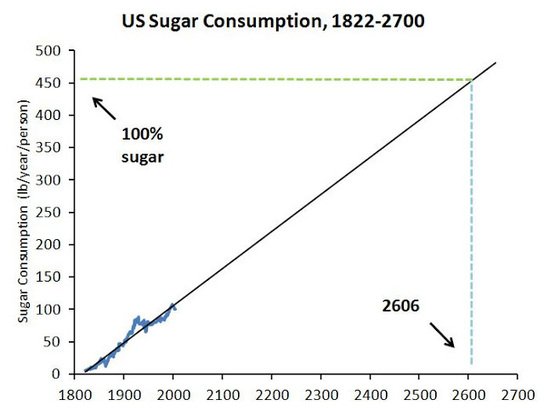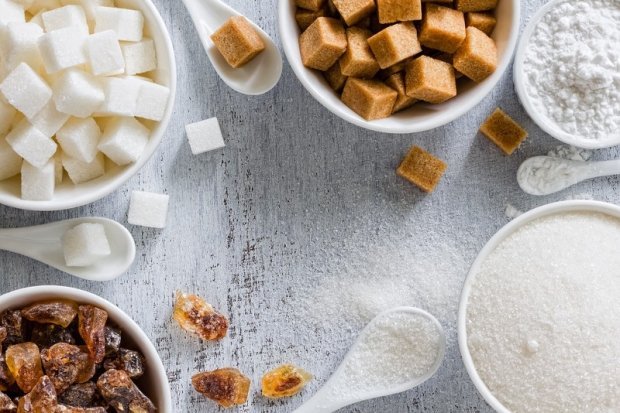Whole Health Source: By 2606, the US Diet will be 100 Percent Sugar

The US diet has changed dramatically in the last 200 years. Many of these changes stem from a single factor: the industrialization and commercialization of the American food system. We’ve outsourced most of our food preparation, placing it into the hands of professionals whose interests aren’t always well aligned with ours.
How safe is fructose for persons with or without diabetes?

In this issue of the journal, Livesey and Taylor (1) present a meta-analysis of clinical trials evaluating the effects of fructose intake. They concluded that fructose is safe at doses of <90 g/d and that it may have the added benefit of lowering concentrations of glycated hemoglobin (HbA1c). This meta-analysis is difficult to interpret, because it involves randomized and nonrandomized studies of differing designs, mixed populations (diabetic and non diabetic lean and obese), different control diets (including some sucrose-based diets that contained fructose), different study durations, and limited endpoints; it also represents an analysis by an industry-sponsored group of a highly selected list of studies
Ultra-processed foods and added sugars in the US diet: evidence from a nationally representative cross-sectional study

Ultra-processed foods comprised 57.9% of energy intake, and contributed 89.7% of the energy intake from added sugars. The content of added sugars in ultra-processed foods (21.1% of calories) was eightfold higher than in processed foods (2.4%) and fivefold higher than in unprocessed or minimally processed foods and processed culinary ingredients grouped together (3.7%). Both in unadjusted and adjusted models, each increase of 5 percentage points in proportional energy intake from ultra-processed foods increased the proportional energy intake from added sugars by 1 percentage point.



